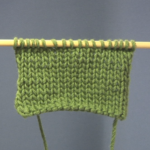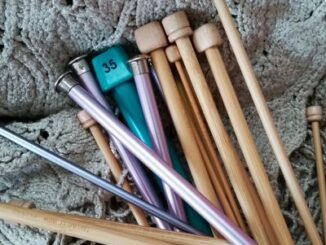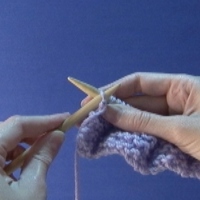 Note: These Instructions are for Left Handed Knitters! If you are right handed, you’ll want to visit the right handed instructions located here.
Note: These Instructions are for Left Handed Knitters! If you are right handed, you’ll want to visit the right handed instructions located here.
I’ll admit, I was a bit skeptical when I was told there was an “easier” way to knit that wouldn’t make your arms tired and your shoulders lock up. After many hours at a time knitting, I experienced some muscle tightness and soreness. I had no idea knitting could be so hazardous! So, when I first learned about the Continental Method, I was amazed. It took a little getting used to, but now I can knit for long periods and not have some of the problems I had before. The cons? I haven’t mastered this form of knitting while watching tv. With the traditional “throw” method of knitting, where you pick up one hand to loop the yarn around, I had it down pat. I was so good at it that I could knit while watching the tv and not my hands. I have not advanced this far in the game with the continental method. So, I alternate. I “throw” if I’m watching tv, and I use the continental method if I’m just going to sit and knit.
So, how do you knit using the Continental Method? I will very gladly show you! First, you’re going to hold your knitting needles like you normally do. Now, instead of holding the yarn with your left hand, you’re going to “feed” the yarn onto the needles around your right hand. Wrap the yarn around your pinkie finger, and then let it drape over the top of your fingers, slightly around your index finger, behind your work. This leads to the piece you’re knitting, and will create a garter stitch.
Next you’ll insert your knitting needle just as you would normally when you knit. Catch the “loose” yarn that leads to your right hand with the tip of the needle, and pull it through the loop. Slide the loop off the right needle. You’ve now completed a stitch!
The video below demonstrates the Continental Method:
You can also make a purl stitch using the Continental Method. Keep the loose yarn in front of your work, and bring the yarn around and over the working needle. Here is a video demonstrating the Continental Purl stitch:



